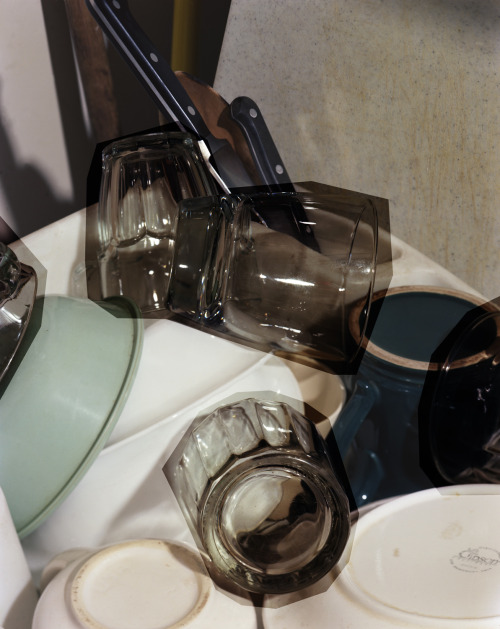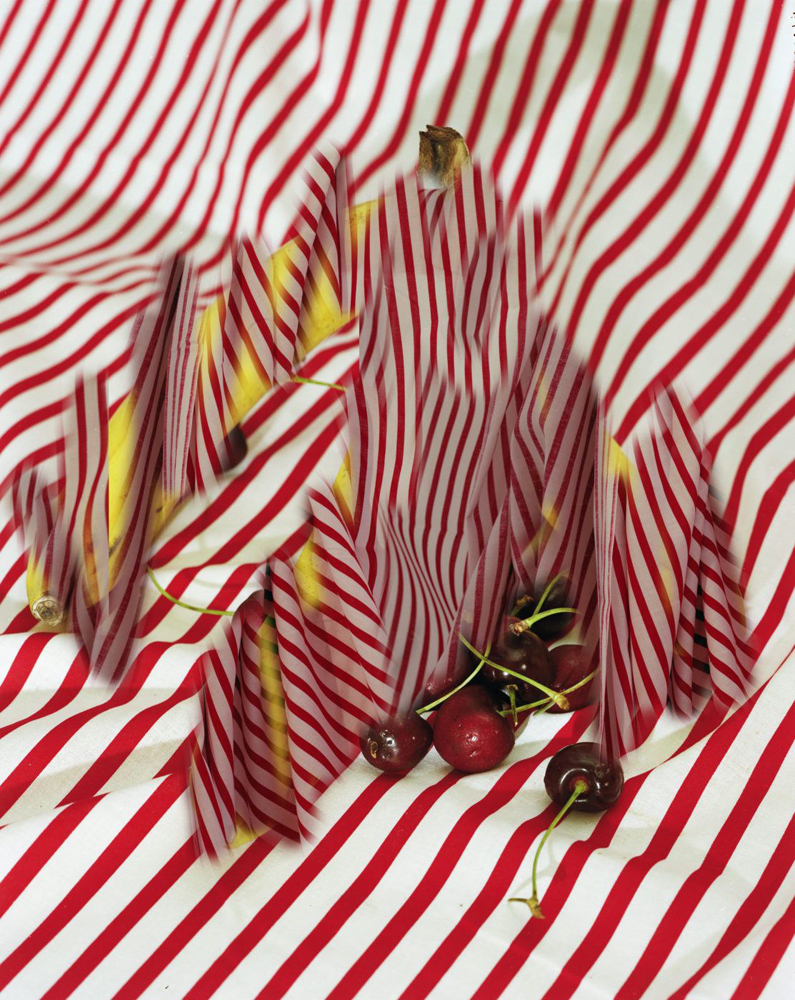Artist Blog
Every week an artist whose single image was published by Der Greif is given a platform in which to blog about contemporary photography.
Perception, Lies and Reality: Illusion
Jun 08, 2017 - Jennifer Niederhauser Schlup
Illusion
[…] These images reinforce the effect of «constructed» images of the previous category as they add illusion. Using both elements, an aspect of construction and of optical illusion, they accentuate the illusory, elusive and ephemeral qualities of photography. They give materiality to a vision that can only be seen either through the lens, from a particular angle – generating new forms for the sole purpose of being photographed – or with the aide of digital technology. They do not pretend to depict anything real, rather they play with the abstract, the mental and the absurd.
The work of Lukas Blalock, in a quite opposed style, deals with similar notions of constructed and illusionistic images – which involve both a physical building and an important part of postproduction. Blalock’s photographs seem at first to stand in total contrast to the series I mentioned previously, with his rough digital work, his intentional disclosure of the mechanics of the construction. His images are no perfect illusions, rather they are a comment on the construction itself: they hint at, and deliberately show, the manipulations behind the scene. He uses all the tools at hand to create perfect images, all the tricks used in advertisement, in a deliberately coarse manner to expose them. The end product resembles collages, unfinished paintings or other seemingly rapidly made images using Adobe Photoshop in the «wrong» way: applying masking techniques The work of Lukas Blalock, in a quite opposed style, deals with similar notions of constructed and illusionistic images – which involve both a physical building and an important part of postproduction. Blalock’s photographs seem at first to stand in total contrast to the series I mentioned previously, with his rough digital work, his intentional disclosure of the mechanics of the construction. His images are no perfect illusions, rather they are a comment on the construction itself: they hint at, and deliberately show, the manipulations behind the scene. He uses all the tools at hand to create perfect images, all the tricks used in advertisement, in a deliberately coarse manner to expose them. The end product resembles collages, unfinished paintings or other seemingly rapidly made images using Adobe Photoshop in the «wrong» way: applying masking techniques and other tools, he stops half- way to leave the evidence of the construction. He explores ways in which falseness and the disclosure of the mechanics can point to specific aspects of the photographed, and to photography’s inherent ability to confuse and alter reality, as we know it. They are a very interesting comment on the state of contemporary photography and the actuality that images are becoming ever more counterfeit. They disclose better than ever the fact that all images are manipulated, constructed and illusions. As Blalock himself explains, it is less about the mechanics of the camera than the viewer’s direct interaction with the pictures: «I am interested in the photograph’s power to direct and focus attention. […]. For me the digital interventions are less in terms of the image than they are about bringing out specific qualities in the objects, places, or people photographed. I want pictures to feel provisional, and to in some way make the viewer aware of my choices as well as the set of possible choices inherent in the making of the image. I […] believe that by making people aware of the mechanics of a situation you more fully engage them in the possibility of its outcomes».34 The illusion is here more in the way he engages the spectator to open his eyes to new visions and to the many possibilities at hand when making an image. The falseness is made evident to reinforce the elusive qualities of photographs.
It is surprising to see how two diametrically opposed approaches bring a similar effect on the spectator: wonder, disbelief, and a forced mental reading.
[…]
34 – http://hafny.org/exhibitions/soloshow/lucas-blalock-sam-falls/interview/



